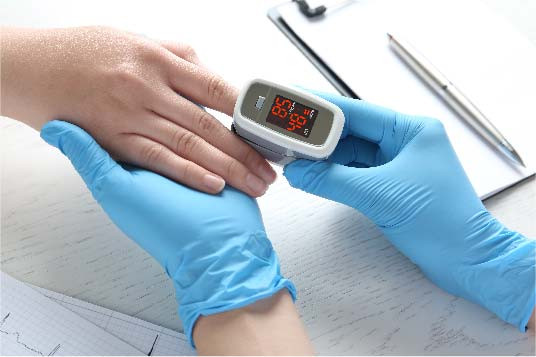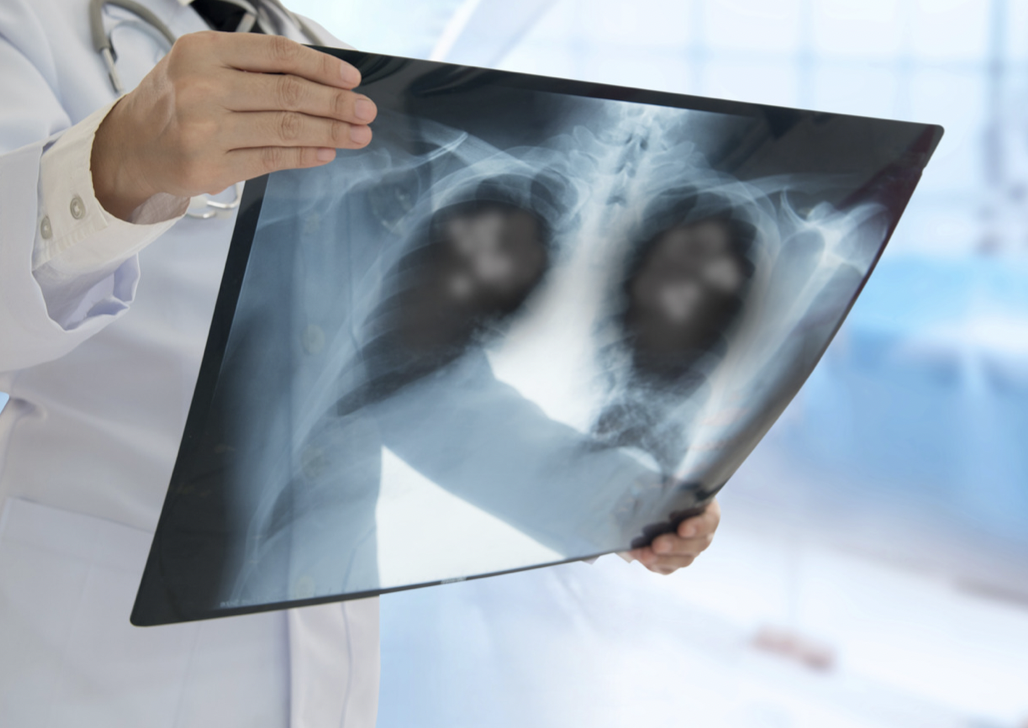Definition
Pneumonia is a form of acute (sudden) respiratory infection that affects the lungs. The lungs comprise many small air sacs (alveoli) that fill with air when a person breathes. When someone has pneumonia, the alveoli become inflamed and may fill with fluid mixed with inflammatory cells, disrupting oxygen delivery.
Pneumonia affects all age groups worldwide, but the highest mortality rates are found in South Asia and sub-Saharan Africa. Pneumonia can cause mild to life-threatening illness. It is the most serious disease in infants and young children, people over 65 years old, and people with certain diseases or weakened immune systems.
Causes
Several infectious agents, including viruses, bacteria, and fungi, cause pneumonia.
- Bacteria
- Streptococcus pneumoniae: This bacterium is the most common cause of bacterial pneumonia.
- Haemophilus influenzae type b (Hib): The second most common cause of bacterial pneumonia.
- Mycoplasma pneumoniae: This bacterium usually causes milder symptoms than other types of pneumonia, so it may not require bed rest.
- Viruses
- Respiratory syncytial virus (RSV): The most common virus causing pneumonia. It is the most common cause of pneumonia in toddlers. Symptoms caused by this virus are usually mild, although they can sometimes be severe.
- Coronavirus: Various coronavirus variants, including SARS-CoV-2 or COVID-19, can cause severe pneumonia.
- Pneumonia due to fungi is most common in people with chronic diseases or weakened immune systems and in people who inhale these organisms in large amounts. Fungi that cause pneumonia can be found in soil or bird droppings. Pneumocystis jiroveci is the most common fungus causing pneumonia in infants infected with HIV. At least a quarter of pneumonia deaths in infants with HIV are caused by pneumonia.
Pneumonia can be transmitted in various ways. Viruses and bacteria commonly found in the nose or throat of children can infect the lungs if inhaled. Viruses and bacteria can also spread through airborne droplets from coughing or sneezing patients. Pneumonia can also spread through the bloodstream, especially during or shortly after childbirth. Further research is needed to determine the transmission from other organisms causing pneumonia.
Risk factor
Pneumonia can affect anyone. However, the highest risk is in two age groups:
- Children under two years old: Healthy children can fight infections with their natural immune system. Children with weakened immune systems are more at risk of developing pneumonia. A child's immune system can be compromised due to malnutrition, especially in babies who do not exclusively breastfeed. Additionally, other diseases such as HIV and measles also increase a child's risk of pneumonia. There are several environmental factors that can also increase the risk of pneumonia in children:
- Indoor air pollution from cooking and heating processes that use fuel
- Living in densely populated settlements
- Parental smoking
- Elderly people (65 years or older), especially those hospitalized in the ICU and using respiratory support devices (ventilators). Additionally, the risk is also higher in patients with chronic diseases, smokers, and patients with immune system disorders.
Symptoms
Symptoms and signs of pneumonia vary from mild to severe, depending on factors such as the causative organism, age, and overall health. Mild symptoms are usually similar to flu but last longer.
Symptoms of virus- and bacteria-caused pneumonia are also similar. However, virus-caused pneumonia more often causes various symptoms compared to bacteria-caused pneumonia.
Symptoms and signs of pneumonia include:
- Chest pain, especially when breathing or coughing
- Confusion or changes in consciousness (in people over 65 years old)
- Cough, sometimes with phlegm
- Fatigue
- Fever, chills, and sweating
- Low body temperature (in people over 65 years old and people with weakened immune systems)
- Nausea, vomiting, or diarrhea
- Shortness of breath
Babies may not show signs of infection. If they do, symptoms may include difficulty eating or drinking, fever, cough, vomiting, fussiness, weakness, difficulty breathing, and may also experience decreased consciousness, hypothermia (low body temperature), or seizures.
Diagnosis
To diagnose pneumonia, a doctor will inquire about your medical history and perform a physical examination, including examining the lungs with a stethoscope. If pneumonia is suspected, the doctor may perform tests:
- Blood tests : are done to identify the causative agent of pneumonia, such as bacteria, which is marked by an increase in white blood cells, and to rule out other diagnoses.
- Radiological examination: Chest X-rays can be used to see lung conditions more clearly.
- Oxygen saturation: Oxymetry, which involves attaching the device to one finger, is useful for measuring oxygen saturation in the body.
- Sputum: Sputum examination is useful for identifying the infectious agent causing pneumonia. Sputum samples will be examined under a microscope.
Management
Pneumonia therapy aims to cure the infection and prevent complications. Specific therapy depends on the type and severity of symptoms, age, and health condition. Therapy includes:
- Antibiotics, if the causative agent of pneumonia is bacteria
- Medications to relieve symptoms such as cough and fever
- Oxygen therapy
You may need hospitalization if:
- Aged 65 years or older
- Experience a decrease in consciousness
- Experiencing a decrease in kidney function
- Low blood pressure
- Rapid breathing
- Need respiratory assistance
- Hypothermia
- Slow or fast heart rate
Complications
Despite therapy, some pneumonia patients, especially those at high risk, may experience complications such as:
- Spread of bacteria to the bloodstream
- Difficulty breathing
- Fluid accumulation around the lungs (pleural effusion)
- Lung abscess or collection of pus that forms a hole in the lung
Prevention
Several ways to help prevent pneumonia include:
- Vaccines are available to prevent some types of pneumonia and flu. You and your child can consult with a doctor to get these vaccines.
- Practicing good hygiene
- Not smoking
- Maintaining the body's immune system with adequate rest, regular exercise, and a healthy diet. Sufficient nutrition is key to boosting a child's immune system, from exclusive breastfeeding until 6 months. In addition to preventing pneumonia, exclusive breastfeeding also helps reduce the duration of illness if a child develops pneumonia.
- Pay attention to environmental factors such as indoor air pollution; for example, using cooking appliances that do not produce pollution and implementing good hygiene practices in densely populated settlements can also reduce the number of children affected by pneumonia.
- In children with HIV, daily antibiotics can be given to reduce the risk of pneumonia.
When to see a doctor?
If you have difficulty breathing, chest pain, a persistent fever of 39 degrees Celsius or higher, a persistent cough, especially if there is phlegm, you should consult a doctor.
For some people, it is important to see a doctor because they have a high risk of serious illness. These individuals include:
- People aged 65 years or older.
- Children under 2 years old showing symptoms.
- People with certain medical conditions such as heart failure or chronic lung disease, or immune system weakness. In people like this, pneumonia can quickly become a life-threatening condition.
- People receiving chemotherapy or taking medications that can suppress the immune system.
Looking for more information about other diseases? Click here!
- dr Nadia Opmalina
Pneumonia. (2022). Retrieved 15 June 2022, from https://www.who.int/news-room/fact-sheets/detail/pneumonia
Pneumonia - Diagnosis and treatment - Mayo Clinic. (2022). Retrieved 16 June 2022, from https://www.mayoclinic.org/diseases-conditions/pneumonia/diagnosis-treatment/drc-20354210
Pneumonia. (2022). Retrieved 16 June 2022, from https://www.hopkinsmedicine.org/health/conditions-and-diseases/pneumonia












